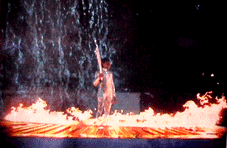How to Make People Like You:
Secrets of Instant Rapport
Secrets of Instant Rapport
MAKE A GOOD FIRST IMPRESSION
It takes very little time for people to form an impression of someone they have just met, and that impression tends to stick. A recent study by Harvard University psychologists found that the attitude students formed toward new teachers in just two seconds was essentially the same as the one they held after sitting through the whole course.
 Of course, you cannot expect to become everyone’s best friend in two seconds, but if you make the right first impression, demonstrating that you are sincere, safe and trustworthy, you can initiate the building of a lasting rapport within 90 seconds.
Of course, you cannot expect to become everyone’s best friend in two seconds, but if you make the right first impression, demonstrating that you are sincere, safe and trustworthy, you can initiate the building of a lasting rapport within 90 seconds.PROJECT A “REALLY USEFUL ATTITUDE”
Your attitude sets the quality and mood of your thoughts, which in turn influence your voice tone, the words you use, your facial expressions and your body language. Your attitude determines the quality of your relationships. When you project a “really useful attitude,” one that is cheery, interested and helpful, other people will want to be around you.
It’s up to you to choose your attitude. When you project the opposite attitude, they will have the opposite reaction.
Very important: Make sure your words, tone of voice and gestures are all consistent. When faced with inconsistency among these three ways of delivering a message, people pay most attention to body language, and then to tone of voice -- and surprisingly little to the actual words.
ESTABLISH RAPPORT BY DESIGN
We like people who are like us, so the key to establishing rapport with strangers is to learn how to be like them. This requires you to deliberately control your behavior to become sufficiently like the other person to form a connection -- at least for a short time.
Look around a restaurant or any other public place where people meet and socialize and compare those couples who are in rapport with those who are not. The ones who are in rapport lean toward one another... adopt similar arm and leg positions... talk in similar tones of voice. In short, they seem to be synchronized.
The quickest way to establish rapport with people you meet is tosynchronize with them.
Synchronizing does not mean you are being phony or insincere. Its purpose is to help you put the other person at ease and speed up the rapport that would otherwise take longer to develop. You are not expected to make your movements, tone and voice mimic the other person’s, but just to act with him/her the same way you would if you were already friends.
HOW TO SYNCHRONIZE
Try to start synchronizing within seconds of making a new acquaintance.Five stages of a successful first encounter...
Pick up on the other person’s feelings and identify with him by synchronizing your movements, breathing patterns and expressions. Use your voice to reflect back the mood conveyed by his voice. Don’t copy him clumsily, but notice his posture, gestures, head and body movements and facial expressions and mirror them.
Particularly important: Mirror his voice tone, volume, speed and pitch.
SECRETS OF EFFECTIVE COMMUNICATION
Get the other person to start talking openly so you can find out what matters to him and synchronize yourself accordingly.
Begin by asking open questions -- those that cannot be answered with a simple “yes” or “no” but encourage the other person to open up and reveal himself.
Key words: Who? When? What? Why? Where? How?
Keep the conversation going by answering a question with another question.
Sensory preferences: If you really want to communicate with other people on their own wavelengths, learn to rapidly figure out their sensory preferences. People view the world in one of three basic ways...
You can quickly recognize which group people belong to by listening to the vocabulary they use. Examples...
Detecting sensory preferences requires you to pay close attention to others, which in itself makes you a more people-oriented, likeable person. And when you learn how to synchronize with people using the vocabulary they feel comfortable with, your ability to develop rapport with almost anyone will grow.
Bottom Line/Tomorrow interviewed Nicholas Boothman, a licensed master practitioner of neuro-linguistic programming who lectures throughout North America and Europe,www.nicholasboothman.com. Mr. Boothman was a fashion and advertising photographer for 25 years. He is author of How to Make People Like You in 90 Seconds or Less (Workman).























